Tagged with 'How pearls are formed'


The very latest news, musings and opinions from the world of Winterson. Quite simply, a celebration of a jewellery, fashion, culture and the business behind luxury.
-
Interview with Melanie Georgacopoulos
Interview with Melanie Georgacopoulos
Melanie Georgacopoulos is renowned for her work reinventing the pearl for a younger 21st century audience. Today’s renewed fascination with the gemstone owes much to this young designer, a graduate from London’s famous Royal College of Art. The Winterson Journal talks to Melanie about her new avenue of exploration with the pearl.
Without inhibition, Melanie Georgacopoulos has sliced, drilled, quartered, caged and wrapped pearls in illusions of knots in her mission to bring this extraordinary gemstone to a new generation of jewellery buyers.
Her most recent collection, MOP Shell, directs her inventive energies to Mother of Pearl. Otherwise known as the material nacre, it is produced by mollusks as an inner shell layer as well as forming the outer coating of the pearls themselves.
What drew you to mother of pearl?
Natural Mother of Pearl has been used by many cultures all over the world, to create both expensive and inexpensive items. It is a strong, resilient and iridescent material that has been used for thousands of years, mainly in the form of inlay, which you see a lot in East Asian and Islamic religious art.

Image 1: MOP Emerald Earrings - Peacock
Image 2: MOP Diamond Dress Earrings - Peacock
At the same time, it was a popular material for more common Victorian household items such as knife handles and buttons, as well as Chinese gaming counters and delicate caviar spoons. I think it’s this heritage as a material that can move from high to low that originally sparked my interest.
You often look for the subversive angle in your design; what was the twist with mother of pearl?
As a material it is more widely used than pearls, but despite its popularity, it has never reached the pearl’s symbolic status. I felt that mother of pearl was ready for a reassessment, in the same way as the pearl felt for me back in 2007 when I first started to play with them in the studio at the RCA.
Pearls were so associated with the twin-set on one hand, and the ostentatious fakes of Coco Chanel on the other, that the gemstone felt like a really rich place to mine deeply for inspiration. Mother of pearl is in the same place really. One rarely sees it used in fine jewellery today and I wanted to explore whether it was possible to challenge those perceptions.
Your pearl collections tend to focus on the monochrome beauty of the gem, where MOP Shell really plays with the fabulous colours of the material. How did it feel to play more with colour?
The collection really aims to celebrate mother of pearl’s qualities as a material, and showcase its various beautiful, rich colors. It comes in soft pink, crème, white, peacock and golden yellow with many variations.
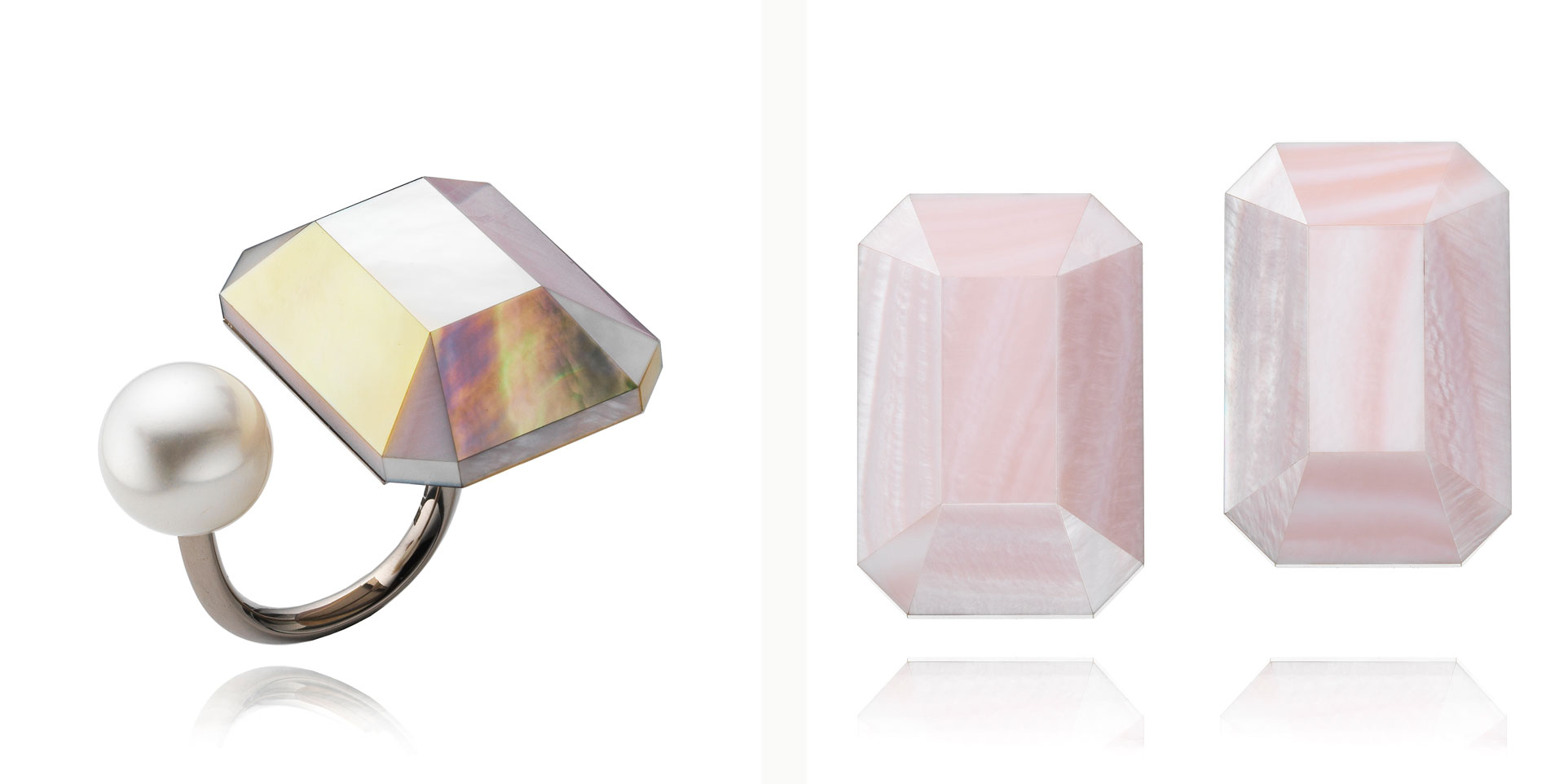
Image 1: MOP Emerald Ring - Multicolour
Image 2: MOP Emerald Earrings - Lavender
It was actually really refreshing to work with a flat material that has such striking colours and work out how to combine them. I’ve enjoyed this so much in fact, that my next collection focuses even more on these diverse colour combinations and how they change depending on the light.
You enjoy exploring the meaning of value in jewellery by playing with the forms of other classic precious gemstones – diamonds and emeralds – and that theme re-emerges here. Can you tell us a bit more about that?
When mother of pearl is used in jewellery, it's mainly seen flat and as an inlaid form. By taking this flat material and creating seamless three dimensional diamond and emerald shapes, I felt I could really push further my exploration into the relationship between gemstones and pearls in contemporary jewellery.
The pearl has moved on and off lists of precious stones over the centuries – from being the height of luxury and value in the time of Cleopatra to being close to worthless in the late 20th century due to overfarming. I think I have always been interested in playing with perceptions of value, asking questions in particular about the value of design and how people perceive that.

Image 1: MOP Emerald Ring - White
Image 2: MOP Emerald Earrings - White
These pieces are strikingly simple, made of relatively poorly perceived materials, and yet the high craftsmanship and labour intensive production that each piece requires elevates the material far beyond any financial worth one might place on the components.
What drew you to jewellery originally and what’s the Melanie Georgacopoulos design philosophy?
I first studied sculpture and my love of jewellery comes from the fact that it relates to the body. I’m also fascinated by the connection that people have to the jewellery they pass on one generation to another.
One of the reasons I think I may have been subliminally drawn to pearls is that my grandmother wore a pearl necklace every day, and that idea of creating something that is worthy of becoming so intimately connected with a person’s identity really interests me. Good design, for me, is innovation, longevity, and has to represent its time. I strive for this with every piece.
View more jewellery by Melanie Georgacopoulos here. -
A Peek at the Pearls of Carl Linnaeus
A Peek at the Pearls of Carl Linnaeus
The world of pearls can hold many surprises, but it is not everyday that you have an opportunity to view a historic treasure secured safely beneath the streets of London.
The experimental pearls of famed Swedish botanist Carl Linnaeus are about to join the forthcoming Pearls Exhibition at the V&A and so we jumped at the chance to see these early successful attempts to culture a spherical pearl in close up.
CARL LINNAEUS
Carl Linnaeus (1707-1778) is best known for his method of classifying organisms that uses two latin names to represent the genus and the species, for example 'Homo Sapiens'. This taxonomy is conventionally used today to describe and classify the hierarchical relationships of animals, plants and insects to each other.

Linnaeus' collections of specimen organisms, including dried flowers, insects, fish and molluscs are unique and are still a primary reference point for scientists to determine if they have found a new species.
Following his death, the Linnean collections were purchased by Sir James Edward Smith in 1784 and transported to London, where they remain today.
THE LINNEAN SOCIETY
In 1788, Smith also founded The Linnean Society to provide a forum to discuss and promote the study of natural history.
The Linnean Society is the world's oldest active biological society. It was at a meeting of the Society in 1858 that papers by Charles Darwin were presented outlining the theory of natural selection and evolution.
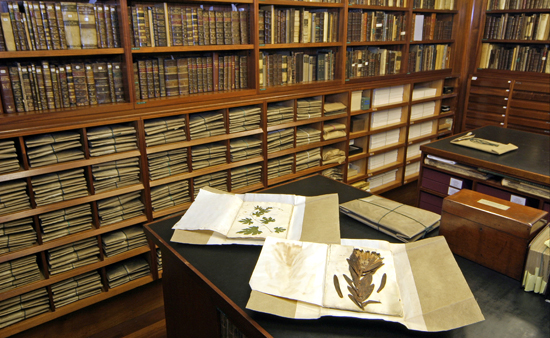
The collections were obtained by the Society in 1829 and are today securely held in a vault below the courtyard of Burlington House, Piccadilly in central London. Leather bound books, old parchment folders and specimen trays line the carefully curated shelves and drawers.
Also in the strongroom was a very rare (and valuable) signed first edition of Charles Darwin's 'Origin of the Species' - a once-in-a-lifetime opportunity to see.
LINNAEA BOREALIS
Carefully wrapped in parchment was this original specimen of Linnaea Borealis, a wildflower of northern and alpine origin that has a distinctive double twin flower shape. The flower is named after Linnaeus as it was a favourite of his whilst travelling in Lapland.

As well as having a beautiful white pink flower, Carl Linnaeus fell in love with the wildflower for the way that it grew persistently in the undergrowth and its ephemeral, short-lived life. These were two symbols that he felt were important in his own life and portraits of Linnaeus, including the one above, and in the Society all feature the Linnaea Borealis.
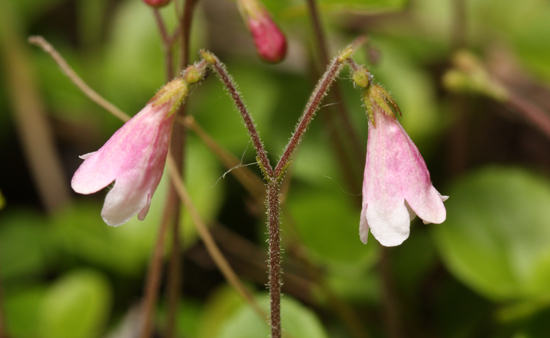
This little flower has a special meaning for Winterson as it was an inspiration for our own flower motif, also honouring its link with Linnaeus and his early achievements in culturing pearls.
LINNAEUS AND PEARLS
Linnaeus declared in 1761 that 'he had heard of people who made gold, but had never heard of any who could make pearls'. Describing the lengthy and time-consuming efforts to find natural pearls that he had seen in Purkijaur, Lapland, Linnaeus believed that a technique for culturing pearls existed that would be more effective and profitable for Sweden.
Linnaeus started to experiment with 'Unio Pictorum', a species of freshwater mussel called the Painter's mussel. This mussel was named as traditionally its shells were used by painters as convenient receptacles for mixing paint.
His technique was a variation of an old Chinese method for producing blister pearls. Drilling a hole in the mussel's shell, Linnaeus inserted a small granule of limestone between the mantle and the shell to help produce a free spherical pearl inside the mussel.
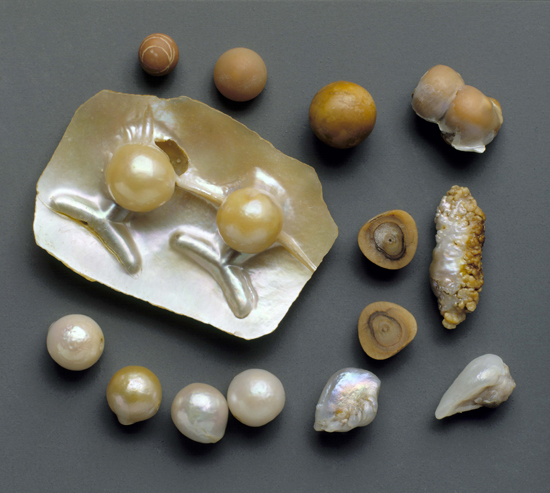
The mussels were returned to the riverbed for six years to produce what is regarded as the world's first spherical cultured pearls. They are indeed historic and fascinating to view.
Linnaeus' method is also based on an old misunderstanding that pearls are created with a grain of sand. We know now that a response to illness or a parasite is the more likely explanation for the growth of natural pearls in an oyster or mussel.
These experimental pearls were not ultimately the source of riches that Linnaeus had hoped for, but he was enobled by the King of Sweden for his efforts taking the title von Linné. The pearls, a patent and Linnaeus' secret were sold to a Swedish merchant named Peter Bagge, but nothing came out of this venture.
Another Londoner Sir John Hunter is recorded as having attempted to culture freshwater pearls in his ponds at Earl's Court Manor House using a similar method to Linnaeus, but it was left to a different Englishman William Saville-Kent to make the next break-through in pearl culturing.
SEE THE LINNAEUS PEARLS AT THE V&A
We would to like thank Elaine Charwat, Deputy Librarian of the Linnean Society for her fabulous help in showing us Carl Linnaeus' pearls.
The pearls themselves are on display soon at Pearls, the V&A's new exhibition. Not to be missed...
-
Fascinated by Pearls: William Saville-Kent
Fascinated by Pearls: William Saville-Kent
One of the most influential and unsung pioneers of the modern day cultured pearl industry was an Englishman called William Saville-Kent.
Many popularly associate Kokichi Mikimoto with the discovery of the technique to culture a spherical pearl in the early 20th century. But the intriguing truth of the race to discover how to mimic nature's process of creating a spherical pearl is far less clear, even today.
By the late 1890s, the pearling industry in Queensland, Australia was in real trouble. Although the sixth largest industry in Queensland in 1884, its export value had almost halved within the next 5 years. The coral and oyster beds off the northern coasts of Australia and the Torres Strait between Australia and New Guinea were sadly being depleted by divers and fishing fleets in search of valuable natural pearls and mother-of-pearl shell for use as buttons.
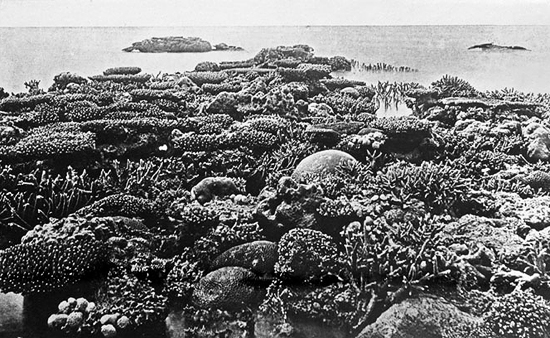
William Saville-Kent was a marine biologist with considerable experience of surveying and managing fish and oyster stocks. Over a period of 15 years, he was appointed by the British Colonial Government as Inspector of Fisheries in Tasmania (1884-87) and Commissioner of Fisheries for both Queensland (1889-92) and Western Australia (1892-95).
One of his main roles was to report on the increasingly difficult economic and environmental situation facing the pearling industry, introducing systems for licensing fishers, regulations for protecting the smaller sizes of the catch and creating protected government reserves for the longer-term sustainability of this natural resource.
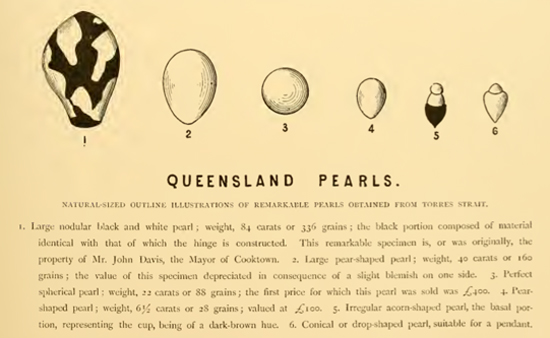
Saville-Kent was also a practical naturalist and was the first to recognise the difference between the silver and gold-lipped Pinctada maxima South Sea pearl oyster and the black-lipped Pinctada margaritifera cumingii Tahitian pearl oyster.
Beginning his experiments in 1889 at Thursday Island in the Torres Strait, the centre of the Queensland pearling industry, Saville-Kent would have been very aware of the impact that his work could have on the industry that he was so fascinated with. In this extract above from his 1893 book The Great Barrier Reef, he describes a single perfect spherical pearl (number 3) with a market value then of £400, worth approximately £40,000 adjusted for inflation today.
By 1891, Saville-Kent had successfully produced a number of cultured blister pearls and exhibited these in London. This was two years before Mikimoto had cultured five semi-spherical pearls in Japan.
Returning from London in 1905, with a syndicate called 'The Natural Pearl Shell Cultivation Company of London', a commercial cultured pearl farm was established near Torres Straits. Saville-Kent and his financial backers were convinced that they had the secret of how to produce a spherical cultured pearl.
There were by now others, however, with the same objective and this unique commercial and scientific race had begun...
-
Pink Pearls, Glamour and Lipstick
Pink Pearls, Glamour and Lipstick
Eternally feminine, the colour pink represents love, prettiness, cuteness and old-school glamour. Midway between the colour red and the purple hues of magenta, pink is the colour of cherry blossom, flamingoes and a girl's favourite things.
Pink is also one of the natural pastel colours of freshwater cultured pearls. With the unique iridescent properties of a pearl as it catches the light, the highest quality pink pearls will make truly beautiful and gorgeous pearl jewellery.
The reasons why a pearl is a particular colour is complex and not fully understood. The colour of a pearl generally corresponds to its type of mollusc and the colour of the inside of its shell. Water purity and environmental conditions may also have an influence. Trace elements such as iron and magnesium are thought to probably cause the pink body colour of a pearl.
The natural pink colour of freshwater pearls is soft, subtle, and certainly not loud. Some colour enhancements and organic dyes may be used to improve a pearl's appearance, but any colour treatment such as this should be fully disclosed to you. Check for pearls that have no variation in colour, dye that has collected in any pits or bumps on the pearl's surface, or which may be concentrated at the drill hole, and if in doubt ask your retailer.
Pink freshwater pearls are versatile gems that will flatter nearly any skin complexion with colour and shine, much as a line of soft coloured lipstick would. A beautiful pink pearl necklace will add a touch of colour to a little black dress or tone easily with an open neck purple or red top. Pink pearl stud earrings are delightful to be worn with casual weekend and evening wear.
Freshwater pearls are also formed in other pastel colours, usually called apricot, peach and lavender. A multi-coloured pearl necklace, combining the pastel rainbow of freshwater pearl colours, is also fabulous to wear.
-
Blue Pearl Secrets of the Abalone Sea Snail
Blue Pearl Secrets of the Abalone Sea Snail
Abalones are large sea snails with a secret. Brown and grey on the outside, and covered in seaweed, they hide a world of iridescent blue pearl colour inside their shells.
Abalones are a variety of marine gastropod, resembling a typical garden snail and carrying a single spiralled shell on its back. They live in shells that are up to 20 or 30cm in size and can survive in both cool and warm saltwater tidal zones.
Also considered a delicacy by some, Abalones are typically found off the coasts of Western USA, Mexico, Japan, Korea, South Africa, Australia and New Zealand. Although most live for 10 to 20 years, they can reach as much as 40 or 50 years in age.
Along with Conch snails and Melo melo, Abalones are also one of the few gastropods that are capable of producing pearls. As with pearls that are formed by a mollusc such as an oyster, an Abalone's pearls are made by depositing thousands of layers of an organic substance called nacre.
The surface of their inside shell, also called mother-of-pearl, shimmers with a kaleidoscope of blues, greens, pinks, silver and purple. The dark lines that weave across the surface of the shell, and linking its colours and texture together, are made with conchiolin, an organic protein that helps form a pearl's nacre.
Natural Abalone pearls are very rare. The unique colours of these blue pearls and their baroque horn shapes are highly sought after by jewellery collectors. One of the largest natural Abalone pearls ever found is the Big Pink Pearl, which was valued in 1991 at $4.7 million. Symmetrical round Abalone pearls are even more unusual and can take many years to form.
Attempts to produce cultured pearls with Abalones have been recorded since the late 19th century. The principal Abalone pearl farms today are in California and New Zealand, where the native paua is used to produce beautiful blue pearl mabe.
Culturing a saltwater pearl requires years of investment, technique, experimentation and pristine environmental conditions. But the challenges for Abalone pearl farmers are even harder as the animal is particularly sensitive to injury.
Blue pearl mabe are more frequently cultivated by pearl farmers as the procedure for making a blister pearl is more successful and less invasive to the Abalone. These beautiful cultured mabe pearls can be made into a unique collection of pendants, rings and earrings.
It would be almost impossible today to collect a sufficient quantity of round Abalone pearls to match and make into a conventional pearl necklace. Imagine how amazing and unique the colours of that piece of jewellery would be! -
The Rare Pink Pearls of Queen Conch
The Rare Pink Pearls of Queen Conch
Pearls can be formed by different types of molluscs other than saltwater oysters and freshwater mussels. One of the most celebrated and rarest types of natural pearls are the delicate pink pearls of Queen Conch. Shyly peeking out from underneath this shell are the eyestalks of an endangered mollusc that lives in the shallow and warm waters of the Caribbean Seas.
Queen Conch, also known as Lobatus gigas or Strombus gigas, is one of the largest living molluscs and can grow up to 30cm in size. Believed to have been around since the Pliocene Epoch, some 2.5 to 5 million years ago, Queen Conch has an average lifespan of between 20 and 30 years old. She likes to lunch in warm shallow sandy waters with easy access to food such as a seaweed salad.
The outside of the shell is in the shape of an elegant cone, which has a distinctive spiral of spines arranged in bands that become wider towards the opening of the shell. Between the shell and the mantle, the part of the mollusc that forms the shell, Queen Conch can also be found very occasionally to be safeguarding a small, precious pearl.
If you are familiar with the lustrous metallic shine of pearls that are produced in a nacre-producing mollusc, the appearance of a conch pearl is quite different. The pearl produced by a conch is a calcareous concretion composed of calcite and may exhibit a beautiful flame-like pattern on its surface. The colour of a conch pearl can also be a subtle pink, orange, brown, or white.
Conch pearls are usually just 2 to 3 millimetres in size, but it is possible to find baroque or oval shaped pearls of up to 3 centimetres. Round shaped conch pearls are almost never discovered today. As finding a natural conch pearl is rare and highly valued, Queen Conch pearls are relatively unknown to the jewellery buying public. It is particularly difficult to find conch pearls that can be matched for use in sets or earrings.
For years populations of conch in the Caribbean have been dramatically reduced by over-fishing, poaching and pollution. Today in most countries fishing and diving for Queen Conch is banned, but her future reign sadly remains a difficult one.
-
Small is Beautiful - What are Seed Pearls?
Small is Beautiful - What are Seed Pearls?
The use of seed pearls in fine jewellery throughout the latter part of the 19th century was immensely popular. Elaborately decorated brooches, tiaras, pins and earrings were very representative of Victorian fashion at the time. In this article, we look at what are seed pearls?
A Fashionable Pearl
Seed pearls have long been admired by jewellers for their elegance and traditional style.
The example above of an exquisite Fabergé Egg, made for Nicholas II of Russia in 1901, stands just 12cm tall and is adorned with seed pearls. The famous French jeweller to the Tsars was known for crafting his jewelled masterpieces with precious metals, enamel, gems and delicate pearls.
Prestigious jewellers such as Tiffany, Cartier and Boucheron also studded their designs with these tiny gems to match the sensual decadence of La Belle Époque fashion.
How are these small pearls made?
The Formation of Seed Pearls
A seed pearl is a small natural pearl, formed in either a saltwater oyster or freshwater mussel, that is usually less than 2mm in diameter.
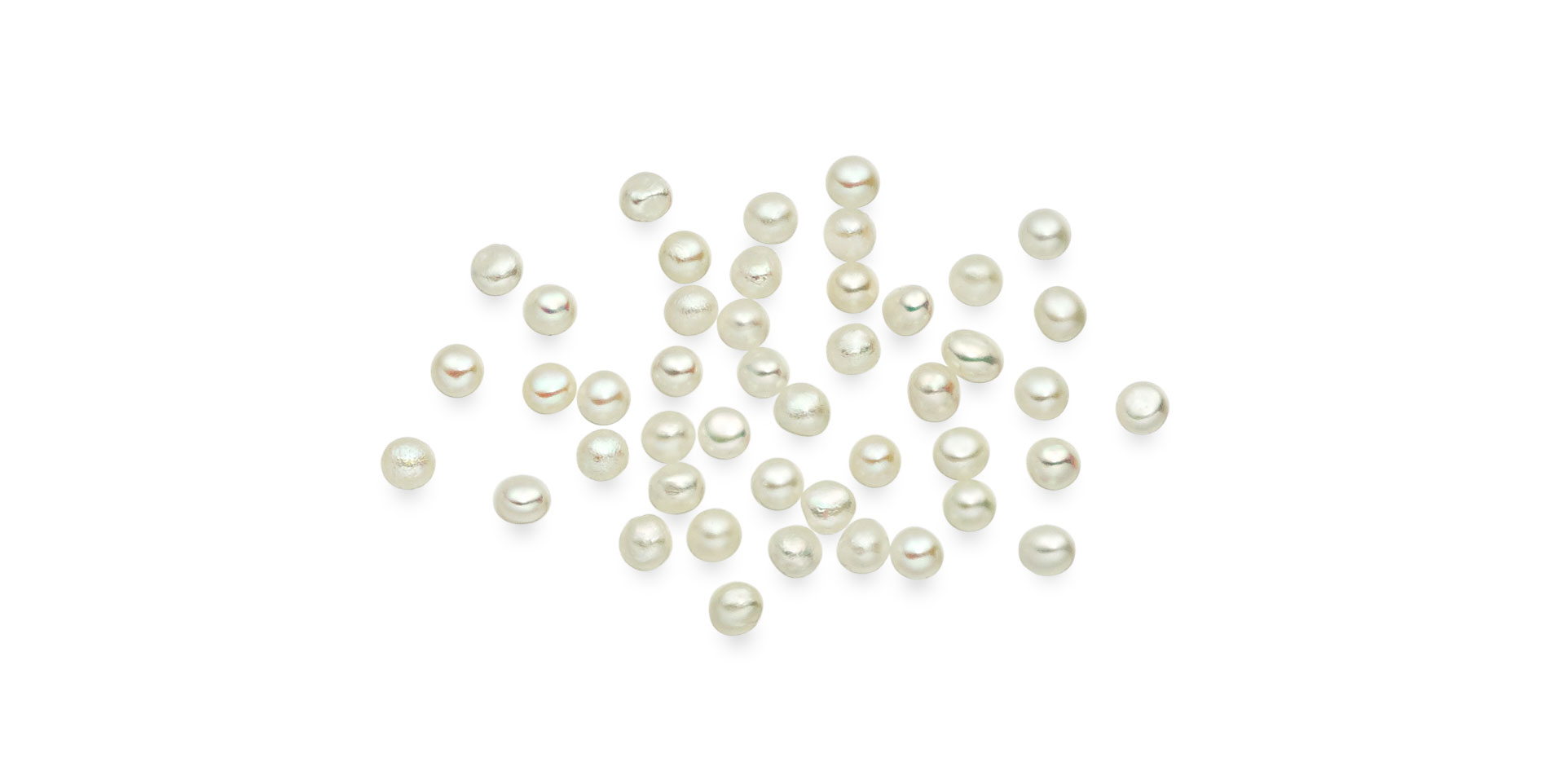
Image: Cultured seed pearls
These pearls would have been found when divers searched for natural pearls in the Persian Gulf and Asia, or closer to home in streams and rivers of the USA, Europe and the British Isles.
Today the term "seed pearl" is more widely used to describe a small pearl that has been created as a result of a pearl farmer trying to stimulate the formation of a cultured pearl in a mollusc.
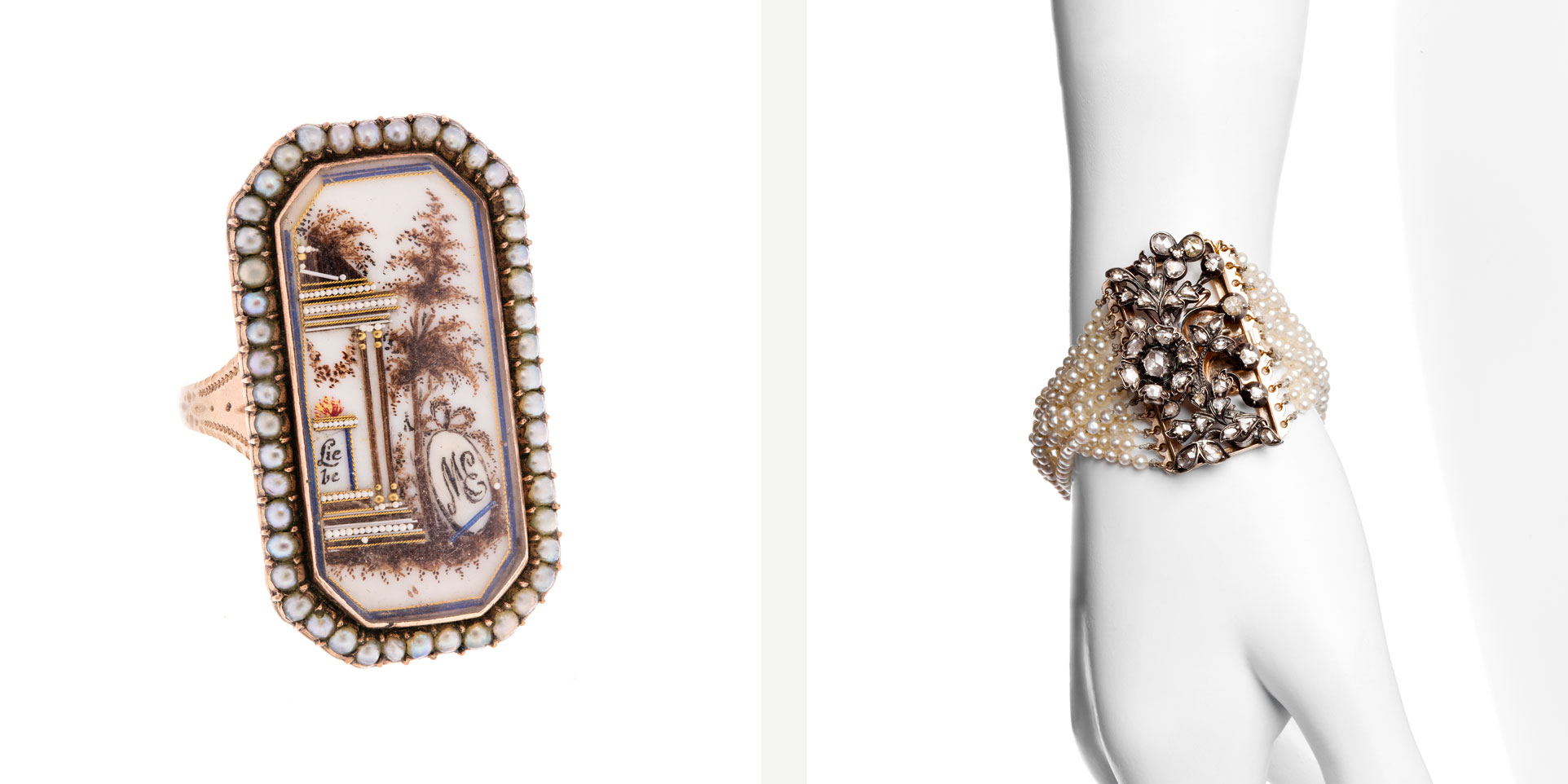
Image 1: Funeral Ring, Landscape and Temples, 18th Century
Image 2: Armband, Jacob Engelberth Torsk, Stockholm, 19th Century
These cultured seed pearls are formed with the accidental help of a loose piece of tissue in the mollusc, perhaps when the implanted bead has been separated from the pearl sac or has been expelled by the oyster.
Traditionally, the first cultured seed pearls would have been formed in Akoya oysters or Lake Biwa freshwater mussels in Japan.
Learn about the different Types of Pearls in our Buying Guide here.
Seed Pearls in Jewellery
Preparing such a tiny seed pearl for use in jewellery requires precision and a careful eye, particularly if the pearl is to be individually drilled and strung in a necklace or tassel earrings.
The famous Baroda Pearl Carpet, sold at auction by Sotheby's in 2009 for $5.5m, was covered with around 1.4 million seed pearls, all drilled by hand and sewn decoratively onto the fabric.
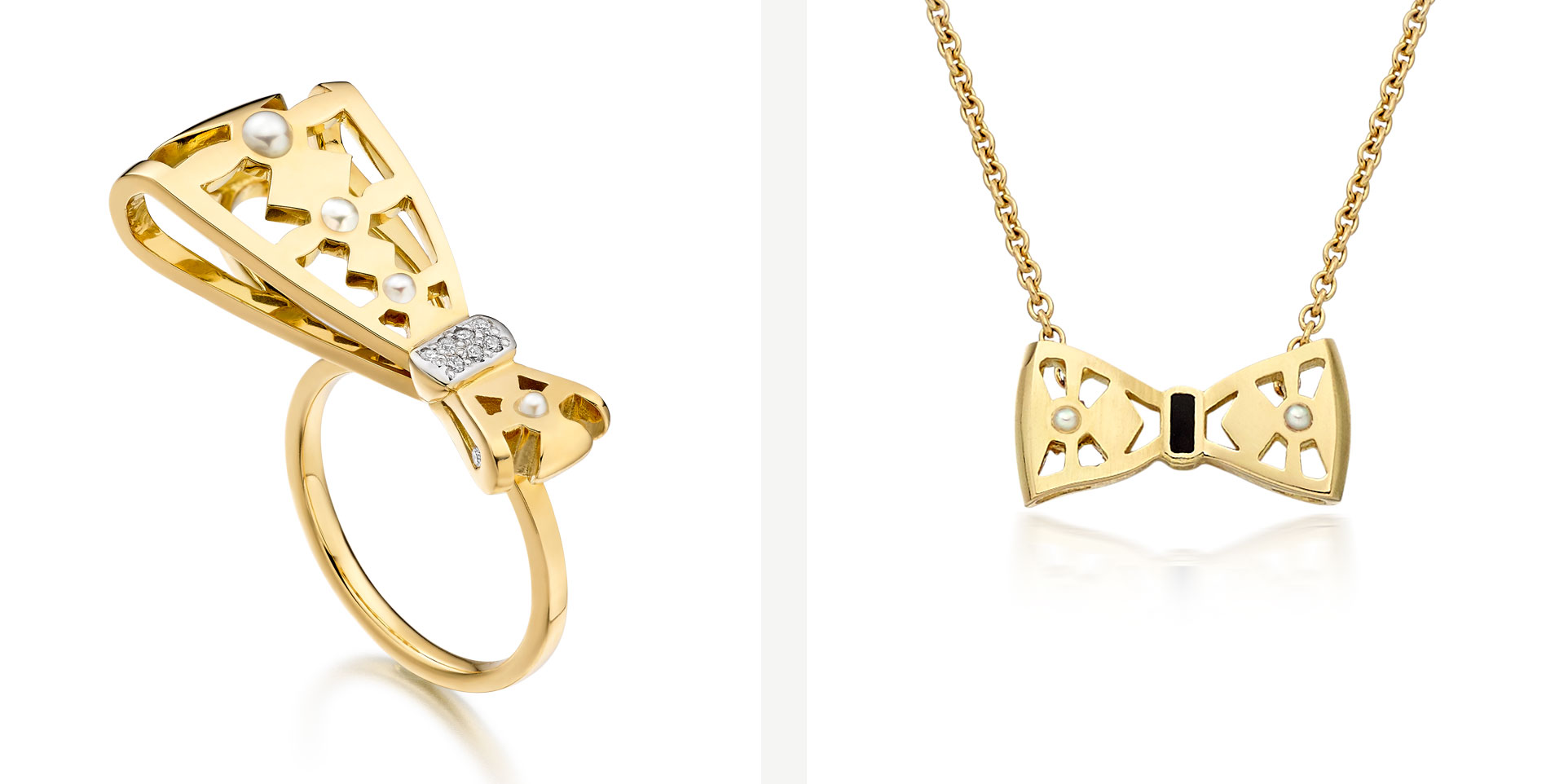
Image 1: Beau Seed Pearl and Diamond Ring with Yellow Gold
Image 2: Beau Seed Pearl and Enamel Pendant with Yellow Gold
Beau, our collection of pearl jewellery and pearl rings, inspired by the Georgian fashion for using seed pearls in jewellery, was designed by Alice Cicolini in 2013. The collection juxtaposes the delicate seed pearl with enamel and white diamonds, and uses the bow as its central motif.
We hope you will agree that Small is most certainly Beautiful!
-
An Introduction to Pearl Colour
An Introduction to Pearl Colour
One of the most beautiful and unique qualities of a pearl is its colour. The popular image of a cultured pearl is that it should be pure and white, but there are many more types of pearls with natural, and quite unnatural colours. What determines a pearl's colour, how is pearl colour graded by an expert and what should you look for when buying pearls?
WHAT CAUSES A PEARL'S COLOUR?
The physical colour of a pearl is influenced by a number of factors. The colour of the host mollusc's shell, and the genetic fingerprint of its tissue and epithelial cells, gives the greatest clue to a pearl's eventual colour. A classic Akoya pearl, for example, will have a neutral white body colour similar to the shell colour of its oyster and a Tahitian pearl will have the dark tones of the black-lipped Pinctada margaritifera cumingii oyster. Although pearl farmers and scientists have tried to influence the colour of a cultured pearl through the selection of a small piece of mantle tissue for pearl grafting, the specific pearl colour remains somewhat of a mystery until the pearl is fully formed.
The quality of a mollusc's environment can influence its colour and is one reason why pearl farmers are increasingly focused on raising marine environmental awareness. The quality and nutritional content of water directly affects an mollusc's health, its growth rate and the quality of the nacre it produces. If the nacre of a pearl is very thin or of poor quality, the colour of the pearl will appear matt and lack overtones. The striking metallic bronze and green colours of some natural American freshwater pearls, for example, are believed to be a result of trace elements such as copper in the local water systems.
There are many shades of colour-treated pearls available today, including Black Freshwater and Akoya, Grey and Peacock Freshwater pearls, Chocolate, Cherry and Rose. Each of these unnatural colours will have been the result of a colour treatment after the pearl has been cleaned. Some colour treatments such as bleaching and applying a pink tint are so widely used that they are rarely disclosed. Other more significant post-harvesting treatments, however, might include immersion in silver nitrate and irradiation to lighten or darken a pearl's colour.
GRADING PEARL COLOUR
The pearl industry and pearl lovers alike commonly use a variety of terms such as gold, pistachio, lavender to help describe the colour of a pearl. To help standardise how pearls are graded, The Gemological Institute of America (GIA), which led the way in establishing a classification system for diamonds, introduced Color as one of its seven key criteria for grading the quality of pearls.
An expert will assess the colour of each pearl according to a description system that uses 19 different cool and warm colour hues.
Each pearl should have the following three characteristics described, where applicable:
- Bodycolour – the dominant, overall colour of a pearl
- Overtone – some pearls display one or more additional overtones of colour in the reflection near the top of a pearl
- Orient – the rainbow colours that are displayed just below the surface of a pearl, usually those of a baroque shape, as it is rotated
As well as having many years of experience with pearls, the team at Winterson is trained in pearl grading by the GIA. Pearl Colour is one of the value factors that we use to describe the pearl jewellery at Winterson. If you would like to know more about the quality of our pearls, or how we grade them, please do contact us.
WHAT TO LOOK FOR
In our experience the most popular colour of pearls is still white, perhaps matched with the sparkle of a diamond. There are more choices of types of pearl available in this colour, that the size of pearl and an individual's budget start to be a significant decision factor.
The pastel shades of freshwater pearls are beautiful for wearing in the summer. The darker exotic shades of Tahitian pearls are contemporary in style and very elegant for business and evening wear.
Some dyeing treatments can be identified if the pearls are uniformly one colour or at the drill hole where it may be possible to see some residue of dye. A darker nucleus inside the pearl may also be evidence of irradiation treatment. If you are concerned about a pearl's colour, ask your jeweller and look for proper disclosure of colour and other grading factors when buying pearls.
-
Pits, Chips and Bumps on the Surface
Pits, Chips and Bumps on the Surface
Look closely at this image of these beautiful baroque Tahitian pearls and it is possible to see several small blemishes and imperfections on the surface of the pearl. Although fake pearls are typically very smooth and artificially perfect, a real pearl may often have irregularities such as pits, chips, bumps and scratches on its surface.
Both natural and cultured pearls are formed by a mussel or oyster over months and even years. Because of this slow process, it is rare for the surface of a pearl to be perfectly flawless and instead it can be quite normal for pearls to have blemishes on their surface. Baroque Tahitian pearls such as these pictured are loved for their individual beauty. Some pearls such as colourful freshwater Kasumi pearls from Japan are known for their distinctive wrinkles on their surface.
The surface of a pearl can range from being spotless to being very heavily blemished. Tiny spots of conchiolin or aragonite, two components of a pearl's nacre, can be minor and may even add character to the gem. Other flaws such as cracks, patches of thin nacre or a strong discolouration of the pearl surface are best avoided. We are very careful to select pearls that are not disfigured in this way or where their longevity may be in question.
Due to their rarity in any harvest, the fewer and smaller the flaws that a pearl has, the more valuable a perfect pearl will typically be. When buying pearls, it can be easy to focus on minor blemishes on a pearl's surface and to ignore other important factors such as lustre. Often small blemishes can also be hidden from view by the jeweller in the setting or the drill hole.
The Gemological Institute of America (GIA) established one of the leading gemological systems for grading the quality of pearls according to 7 key criteria: size, shape, color, luster, surface quality, nacre quality and matching.
To classify the condition of the surface of a real pearl, an expert will assess and grade the surface of the majority of pearls as:
- Clean – Pearls are blemish-free or contain minute surface characteristics
- Lightly Spotted – Pearls show minor surface irregularities
- Moderately Spotted – Pearls show noticeable surface characteristics
- Heavily Spotted – Pearls show obvious surface irregularities
As well as having many years of experience with pearls, the team at Winterson is trained in pearl grading by the GIA. A pearl's surface is one of the value factors that we use to describe the pearl jewellery at Winterson. The baroque Tahitian pearl necklace pictured in this image has a surface grading of Clean to Lightly Spotted and this is fully disclosed on the Winterson website.
If you would like to know more about the quality of our pearls, or how we grade them, please do contact us.
-
What are Coin Pearls and how are these flat pearls made?
What are Coin Pearls and how are these flat pearls made?
Coin pearls are pretty flat-shaped cultured pearls that can be worn casually during the day and add a touch of individual glamour to the evening. Shaped as flat buttons or coins, the best quality coin pearls will shimmer with a beautiful pearlescence.
How are coin pearls made?
Coin pearls are cultured pearls mostly farmed today in China in freshwater mussels in river, lakes or streams. They are formed by the pearl farmer inserting a flat round nucleus into the mussel to help it form the shape of the coin pearl. The mussel will deposit nacre around this disc, often made of shell, so that there is an even thickness of nacre on both sides of the flat pearl.
The process can take up to a year before the pearl is ready. Choosing exactly when to remove the pearl from the mussel is important. Too soon, and the nacre will be very thin, with the shape of the disc nucleus being quite visible. Too late, and the pearl will begin to take on a baroque, non-symmetrical shape.
What are the qualities of coin pearls to look for?
Coin pearls are typically 10-12 mm in diameter, with all the amazing natural white, pink and peach colours of Freshwater pearls. The flat shape of the coins are perfect for jewellery as the surface usually exhibits strong lustre and the flat shape will lie against the skin easily.
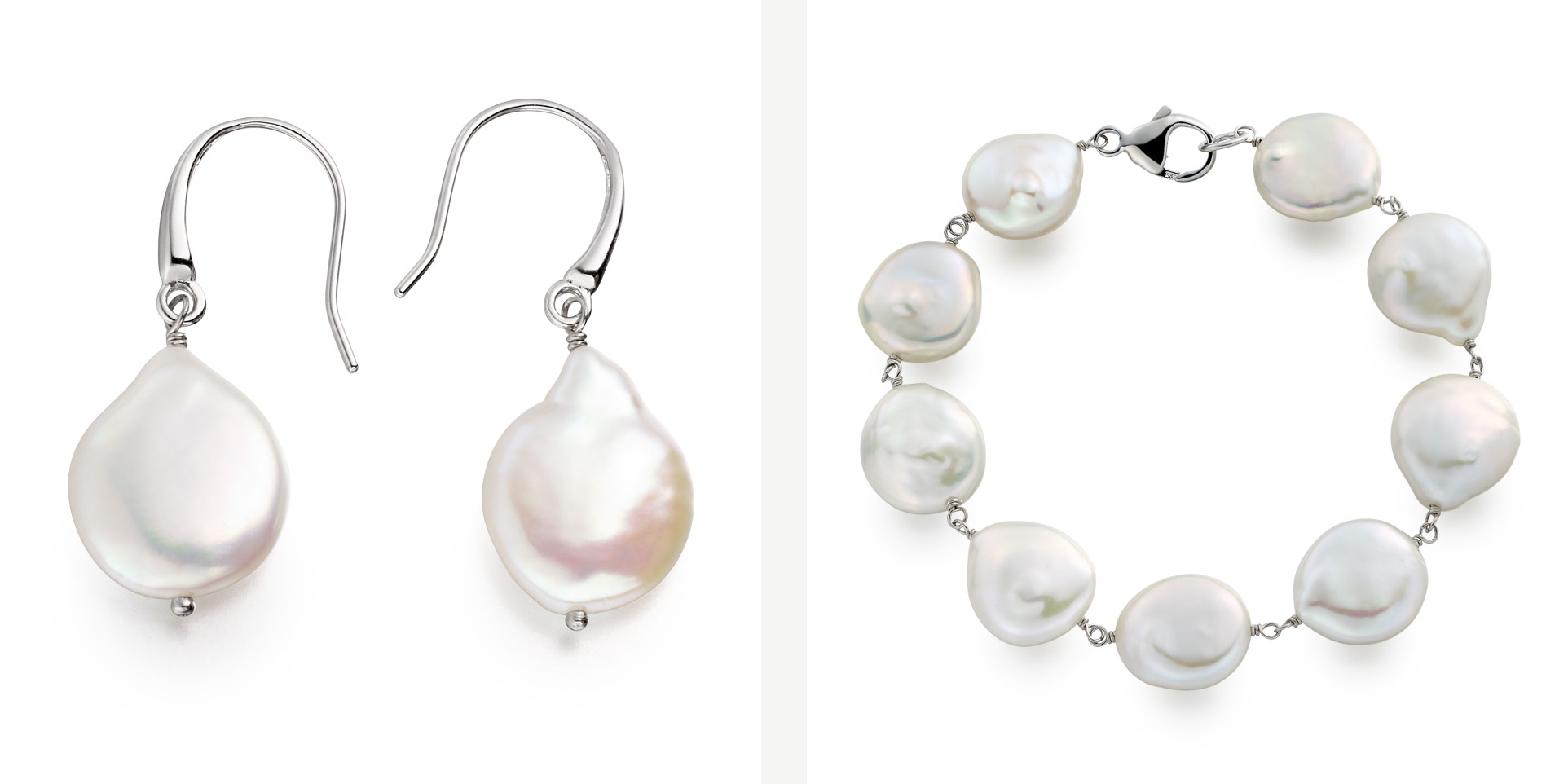
Image 1: Coin pearl earrings
Image 2: Coin pearl bracelet
The quality of coin pearls can vary significantly. When choosing a necklace or bracelet made from coin pearls, or a pair of coin pearl earrings, look closely at the quality of the nacre. If you can easily see the shape of the flat shaped nucleus within the pearl, it is likely that the pearl has been removed from the mussel too early and the thickness of the nacre is too thin. This may lead to dull lustre and the pearl may be prone to scratching or damage.
The highest quality coin pearls with a perfectly round shape, excellent nacre, excellent surface quality are sought after. They are typically bought and sold by specialist dealers.
We look for coins that have a thick coating of nacre. Often these pearls will have some shape or surface irregularities, such as flame-like tails or small bumps, but we love the way that these imperfections add to the character of the jewellery. Their flat shape will lie beautifully and comfortably around the neck.
If you are not familiar with pearls, view our collection of Freshwater pearl jewellery.